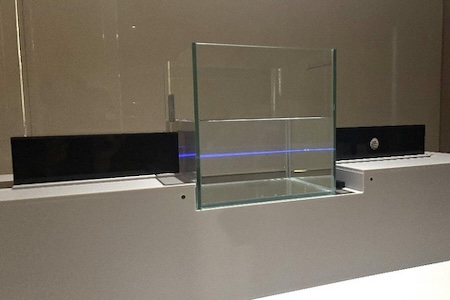
Unmanned Surface Vehicles
Discover cutting-edge solutions from 8 leading global suppliers
Two Saildrone uncrewed surface vehicles (USVs) will return to the area where they spent two months last summer mapping in the north-central Gulf of Maine.
This activity was in support of National Oceanic and Atmospheric Administration (NOAA) deep-sea coral surveys. Prior to last year’s mission, the area where they are operating in the Gulf of Maine was never before mapped in high resolution using modern tools.
Accurate ocean depths and seafloor topography are essential for navigation, resource management, tsunami forecasting, telecommunications, understanding weather and climate, managing environmental changes, and so much more.
But only 23% of the global ocean has been mapped using modern, high-resolution tools, leaving substantial gaps in current knowledge about the oceans. Saildrone is excited to kick off its first ocean mapping mission on the US East Coast.
The Saildrone USVs being used for this mission are 10m (33 ft) Voyager-class vehicles. The Voyager is designed specifically for near-shore ocean and lakebed mapping. The Voyager carries a payload of science sensors and mapping echo sounders, as well as navigation and communications equipment, including AIS, radar, and cameras.
The Saildrone Voyager is the only survey USV that can deliver long-duration International Hydrographic Organization (IHO)-compliant multibeam mapping surveys and ocean data collection at depths up to 300 meters (900 feet).
Saildrone USVs are primarily wind and solar powered, but the Voyager also carries a high-efficiency electric motor for speed and maneuverability in light winds, which makes it ideal for near-shore operations.
The two vehicles will be working in the same general section of the study area but could be 5 – 10 nautical miles apart from each other, surveying separate tracklines in adjacent blocks.
Each vehicle will be operating in small portions of the total survey footprint, surveying one 2.7 nm x 2.7 nm square each day. The vehicles are beginning the survey at the southern end of the survey area and are progressing north.
The first two weeks of operations are scheduled to be conducted south of 43°N. As the survey progresses, updates on anticipated vehicle coordinates and areas completed will be published weekly on our blog. The total polygonal area of operation across the two-month mission is depicted in the chart and coordinates below.
To ensure safe operations at sea, each vehicle is equipped with an Automatic Identification System (AIS) transceiver, enabling it to see and be seen by surrounding commercial traffic. The vehicles are slow relative to other marine users and operate at speeds between 2 – 4 knots, moving between a series of predetermined waypoints.

They are designed with high visibility colors for daytime visibility, a bright navigation light for nighttime awareness, and are equipped with a radar reflector. Onboard cameras provide domain awareness to operators at Saildrone Mission Control and are monitored remotely 24/7.
Survey operations resumed in the Gulf of Maine starting May 20. For the period of May 20 – May 27, Saildrone will have two vehicles collecting data in the survey blocks shown in the image.
Because Saildrone vehicles are dependent on wind for propulsion, actual survey progress will be dependent on environmental conditions. For planning purposes, the company anticipates it will take one to two days to complete a survey block before proceeding to the next area.
More details of the operational specific and the areas being mapped can be found on Saildrone’s website.

















